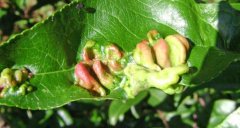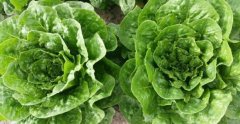What causes apricot scab? How to prevent and control the scab formation of apricot
Peach scabs on apricots come from the fungus Cladosporium carpophilum. It also affects nectarines, plums and peaches. Most apricots with peach blemishes are grown in family orchards because commercial growers take precautions to prevent it.
apricot and peach scab
Anyone wishing to have sweet, juicy apricots in their orchard needs to know about peach scabs on apricots. This fungal disease is also known as "freckles" because of the small spots that appear on the fruit.
After a warm, wet spring, you'll often find peach scabs on apricots. Fungi produce lesions on the young shoots of overwintering spores. As the weather warms, these spores can cause spring infections. They grow fastest at temperatures around 65 to 75 degrees Fahrenheit (18-24 degrees Celsius).
However, you may not see symptoms immediately after infection. They may appear after 70 days. However, you can and should start acne treatment early.
How to prevent apricot scab
To treat apricot scab, you must first make a good choice of where to plant apricots and how to take care of them. Perhaps the most important thing to remember is to drain apricots and other susceptible trees out of low-lying, poorly drained air and soil.
Another good precaution against apricot scab is to carefully prune trees to open the center. If you use an open-center pruning system, it provides good air circulation within the canopy, slowing or stopping fungal activity.
Don't spend too much time looking for acne resistant apricot varieties. Most experts agree that cultivars are susceptible to this fungal disease. If you need further apricot sore treatment, look at fungicides.
Bactericide is an important weapon in the treatment of apricot ulcer. You need to find a fungicide recommended for this disease and spray it according to label instructions. Usually, from the time the petals fall to 40 days before harvest, you need to spray once every two weeks. The most critical spraying time for apricot scab treatment is from molting division to five weeks after flowering.

- Prev

How are peach scab and leaf curl treated? Brown rot and bacterial canker disease symptoms and treatment
There are many kinds of fruit trees, but there are many common fruit diseases, many of which can be found. The best thing you can do to prevent fruit tree disease is to prune the trees to allow sunlight and air to pass through the branches, as disease tends to occur in dark, wet conditions.
- Next

Introduction of a new variety of crispy lettuce and matters needing attention in the cultivation of crispy lettuce.
Crispy lettuce varieties offer green, beautiful teeth, buttons and sweetness, and can be paired with any seasoning. What is crispy lettuce? You may think that crispy head lettuce is a common iceberg lettuce in your production market. Multi-functional, easy to grow, know such as
Related
- A course of planting techniques and methods on how to grow carrots
- How to plant the latest tulips?
- Is it better to pick tea in the morning or in the afternoon? When is the best time for tea to be picked? what is the third or fifth tea?
- Launch Yuanxiao Happy combination Haocha + Tea Yuan healthy Taste
- Penghu Tourism "Fireworks 20 Parade with You"
- 2022 West Lake Happiness holds "Digital Revitalization Voucher" and draws iphone13 and laptop.
- Banqiao Fuzhou social houses are designed to change start-up combined with police elimination to create a safe and livable environment
- The convenient measure of "mechanical weeding" in Xinbei has been abused and the Agriculture Bureau has imposed heavy penalties on the illegal land consolidation.
- Changgeng University Joins Hands with Four Memory Factories to Rescue Memory Talent Shortage
- The list of Taiwan's top 100 MVP managers is listed by the Director-General of the Farmers' Association of Sanxia District.

